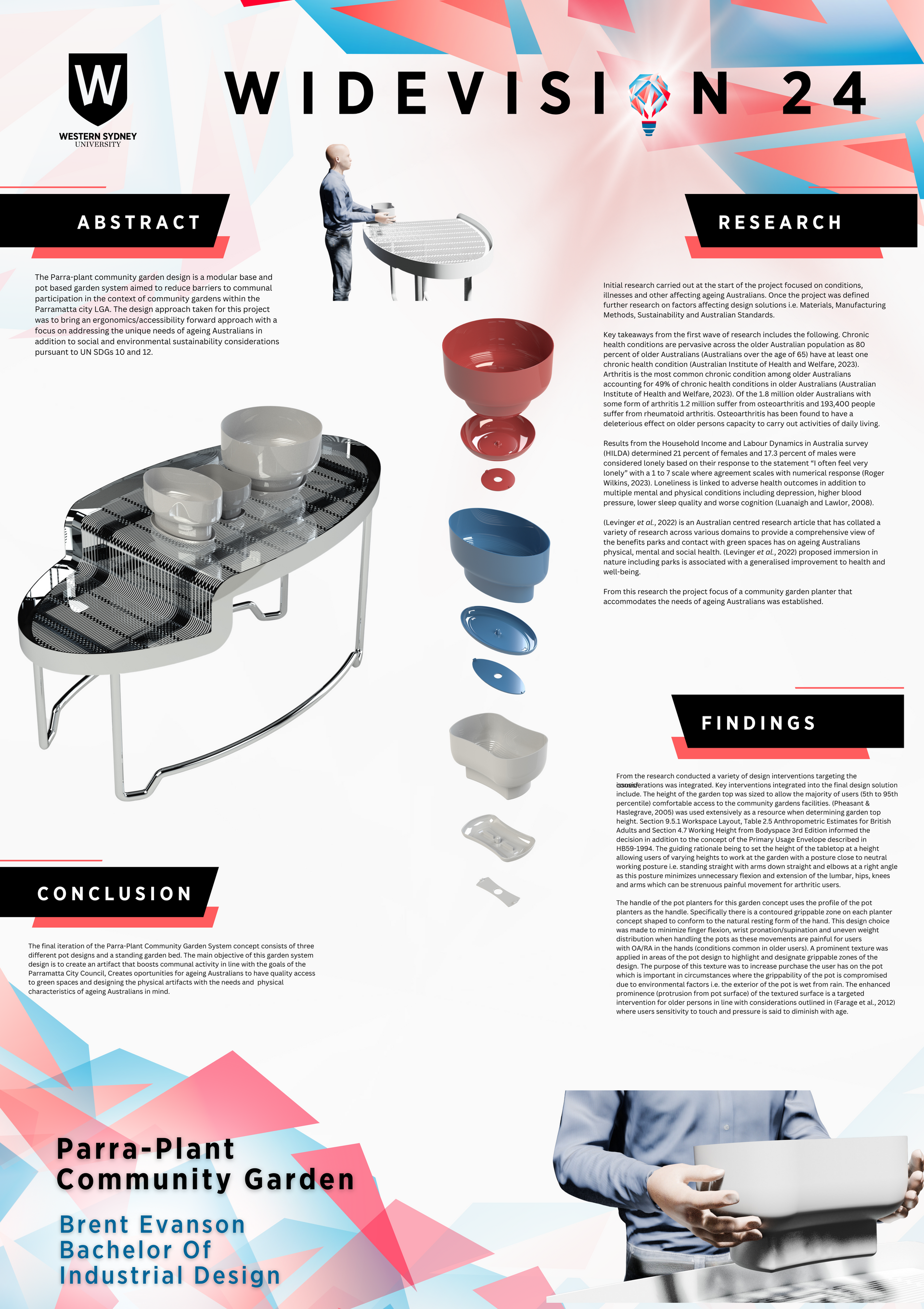
Brent Evanson
Parra-Plant Community Garden
PROJECT
This project aims in partnership with the Parramatta City Council to create an artifact for use in community gardens suitable for usage with older Australians with the express purpose of driving social participation in communal activities i.e. gardening for this demographic in the Parramatta City LGA.
Additionally another primary focus of the project is to bolster the target demographic groups mental and physical health via the positive effects of exposure to green spaces and communal spaces. Social and material sustainability factors are also key considerations of this project with particular focus being given to UN SDG goals 10 “Reduce inequality within and among countries” and 12 “Ensure sustainable consumption and production patterns”.
Design focus on goal 10 “Reduce inequality within and among countries” is an influence in the approach taken in meeting target user needs. Specifically targeting goal 10 solidified an accessibility forward approach to the specified design need of boosting participation in communal participation in community gardens. This accessibility forward approach guides the rationale for design decisions towards solutions that break down barriers to access and participation for the community garden for ageing Australians. Addressing goal 12 “Ensure sustainable consumption and production patterns” in the context project is tied closely with sustainability strategies deployed through the project. Specific focus was given to targets 12.2 “By 2030, achieve the sustainable management and efficient use of natural resources” and 12.5 “By 2030, substantially reduce waste generation through prevention, reduction, recycling and reuse” as these targets align most closely with the sustainability strategies relevant to the project proposal. Consideration of target 12.2 is reflected in implementation of Life Cycle Analysis, Dematerialisation and Design for Transportation as these implemented strategies are related to ensuring resources are being chosen and used efficiently and sustainably. Strategies implemented in consideration of target 12.5 includes Product Lifetime Extension, Design for Disassembly and Design for Assembly as these strategies are focused on minimizing waste generation in the project proposal.

With respect for Aboriginal cultural protocol and out of recognition that its campuses occupy their traditional lands, Western Sydney University acknowledges the Darug, Eora, Dharawal (also referred to as Tharawal) and Wiradjuri peoples and thanks them for their support of its work in their lands in Greater Western Sydney and beyond.
Acknowledgement of Country
Western Sydney University Copyright © 2004-2024 | ABN 53 014 069 881 | CRICOS Provider No: 00917K | TEQSA Provider ID: PRV12061 (Australian University)
